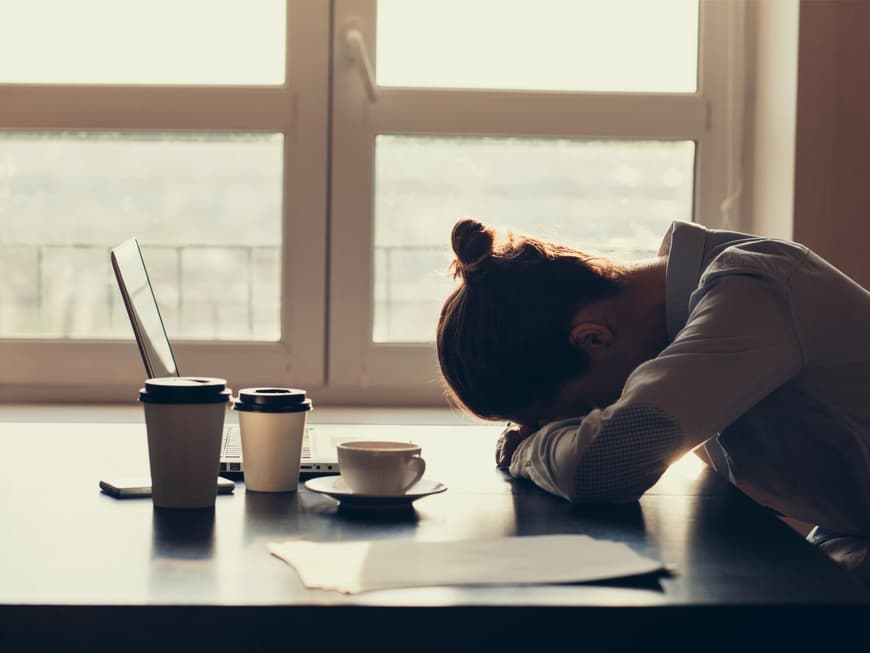
Vital trace element
Most people think relatively little about the trace element iron. But if you lack it, you can feel it in the form of severe exhaustion, concentration problems or permanent shivering - the typical symptoms of iron deficiency. Nothing runs smoothly in the body without iron. As a component of the blood pigment haemoglobin, it ensures that oxygen is transported smoothly into the cells. If it stops, they only work at half strength. If iron is lacking, susceptibility to infection is increased - and the mood plummets, as it also plays a role in the production of the feel-good hormone serotonin.
In addition, there are other iron-dependent proteins that play a role in the normal functioning of organs. Recommended daily dose of the DGE (German Nutrition Society) for women under 50: 10 mg per day (pregnant women need more).
If you have symptoms of iron deficiency: have your blood checked
If iron deficiency is suspected because symptoms occur: Have your blood tested. The haemoglobin and serum ferritin (storage iron) levels are checked. If this is low, this indicates a slight deficiency - the body can still draw on its own reserves. If the haemoglobin level drops drastically, anaemia may occur.
When iron infusions can help
Women in particular are at risk, for example if they have heavy periods, are on a strict diet, do competitive sport or have an increased need due to pregnancy. A blood test by a doctor will show how severe an iron deficiency is. If "only" the ferritin value falls below the normal range, the reserves are already being depleted, but the body can still draw on them. However, if the haemoglobin levels fall, the situation becomes critical: the stores are already empty and anaemia with a pronounced iron deficiency can occur. In this case, the doctor prescribes iron supplements to replenish the stores bit by bit. This can take three to six months. You should never take highly concentrated supplements on your own, as too much iron can also be harmful. It is better to see a doctor. In severe cases of intolerance or disease-related iron deficiency, such as Crohn's disease, a chronic inflammatory bowel disease, iron is often administered by infusion via the veins. This has the advantage that the gastrointestinal tract is bypassed and the trace element ends up directly where it is needed.
Beware of overdosing
Critics warn against administering infusions to women who are exhausted unless they suffer from severe anemia. This is because they are not without possible side effects: headaches, dizziness, rashes, hypersensitivity reactions and even allergic shock can occur.
How to replenish iron stores
Iron is mainly found in liver, liver sausage, pistachios, chanterelles and thyme. Iron boosters include vitamin C and fruit juices, while iron robbers include tea, coffee and oxalic acid (in spinach and rhubarb). Recommended daily amount according to the DGE for women under 51 years: 15 milligrams; for women over 51 years: 10 milligrams.
A brief overview of the best suppliers, promoters and inhibitors of iron:
Animal products: Iron from meat and sausage can be better utilized by the organism than from plant foods. Top supplier: Liver (up to 30 mg per 100 g).
Plant sources: Wheat bran (16 mg), pumpkin seeds (12 mg), sesame seeds (10 mg) contain a comparatively high amount of iron - per 100 g.
Iron boosters: Vitamin C and acidic drinks with lactic or fruit acid boost the absorption of this important trace element.
Iron inhibitors: Black tea, coffee and red wine can interfere with iron absorption.
You might also be interested in this:
Heavy periods? Causes, consequences and treatment
New method: Doctors can detect iron deficiency from lips
Every third woman is affected: Iron deficiency and its consequences
Nutrient deficiency: how to recognize what you are lacking
Energy for the body: more drive through deacidification
